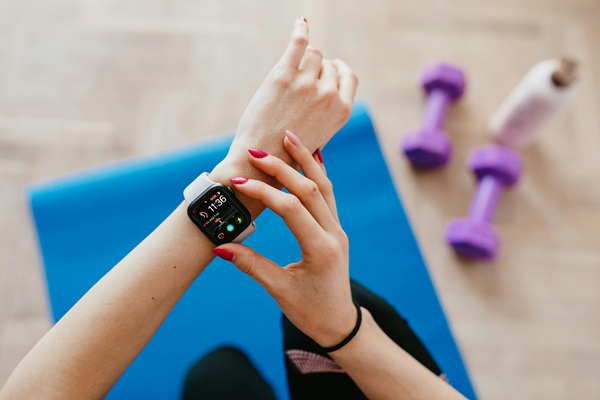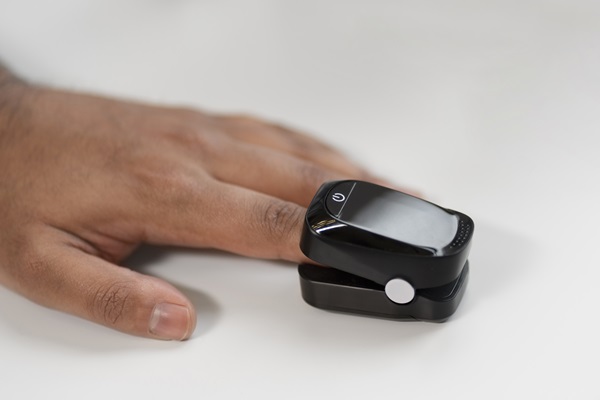The technological revolution in healthcare is marked by the ubiquitous presence of wearable health technology. These discreet, wrist-worn gadgets or even implantable sensors have become the silent custodians of our health, forever vigilant in monitoring our vital signs. What makes this pursuit fascinating is the meticulous surveillance of our physiological parameters, granting us unprecedented insights into our bodies.
The Evolution of Health Wearables
From rudimentary pedometers of yore to today’s multifaceted smartwatches, the evolution of health wearables is nothing short of extraordinary. These devices have evolved in tandem with advances in sensor technology, and their foray into mainstream consumer markets has fostered widespread adoption.
Wearable ECG monitors, for instance, employ electrodes to record the heart’s electrical activity, offering insights that were once confined to clinical settings. Today’s smartwatches do more than just tell time; they measure a plethora of vital signs and present the data through user-friendly interfaces.
The Vital Signs and Their Importance
At the core of the wearable health technology revolution are the vital signs – an assortment of critical parameters that provide a snapshot of one’s physiological health. Heart rate, blood pressure, respiratory rate, body temperature, oxygen saturation (SpO2), and electrocardiogram (ECG) data collectively constitute the vital signs that wearables can monitor.
These measurements serve as valuable indicators of our health, often acting as early warning systems for underlying medical conditions. The ability to monitor these signs continuously, without the need for regular clinic visits, empowers individuals to take a proactive stance on their well-being.

Key Vital Signs Measured by Wearables
Heart Rate
The heart rate, measured in beats per minute (bpm), is a fundamental vital sign. Wearables employ photoplethysmography (PPG) sensors that use light to detect changes in blood volume, translating this into heart rate data. It’s a simple, yet profound, metric that provides insights into your cardiovascular health.
Blood Pressure
Wearable blood pressure monitors, though not as widespread as heart rate sensors, are gradually gaining traction. These devices use innovative methods like oscillometry to measure systolic and diastolic blood pressure. Monitoring blood pressure trends can help identify hypertension and other cardiovascular concerns.
Respiratory Rate
The rate at which you breathe, measured in breaths per minute (bpm), is another critical aspect of your vital signs. Wearables can detect chest movements or use accelerometers to infer respiratory rate. Monitoring this parameter is valuable in assessing lung function and overall well-being.
Body Temperature
Body temperature monitoring has been revolutionized by wearable thermometers. These devices use thermistors or infrared sensors to provide real-time temperature data. They are particularly useful for tracking fever, which could be an early symptom of various illnesses.
Oxygen Saturation (SpO2)
SpO2, often referred to as oxygen saturation, indicates the percentage of oxygen carried by the hemoglobin in the blood. Wearables employ pulse oximetry technology, typically using LED light and photodetectors, to measure SpO2 levels. This is crucial for assessing lung and cardiovascular health.
Electrocardiogram (ECG)
Wearable ECG monitors are a marvel of modern technology, enabling users to record their heart’s electrical activity. These devices have small electrodes that contact the skin and produce intricate electrocardiograms. They play a vital role in detecting arrhythmias and other cardiac abnormalities.
Wearable Health Technology: How Does It Work?
Sensors and Data Collection
Wearable health technology relies on an array of sensors. For heart rate, PPG sensors illuminate the skin and the amount of reflected light changes with blood flow. Accelerometers and gyroscopes capture motion and orientation data, while thermistors and infrared sensors measure temperature. Understanding these sensors is key to comprehending how wearables work.
Data Transmission and Storage
Data collected by wearables is often transmitted via Bluetooth or Wi-Fi to smartphones or other devices. This data is securely stored in cloud-based services or on the device itself. The storage and transmission mechanisms are designed to ensure the privacy and integrity of your health data.
User-Friendly Interfaces
Wearable health technology comes with intuitive interfaces. Users can easily access their vital sign data through companion apps or on the device itself. Graphs and charts offer visual representations, aiding in the interpretation of the data.
Mobile App Integration
The synergy between wearable health technology and mobile apps is pivotal. These apps not only display data but also offer features like setting goals, reminders, and health insights. Integration with broader health ecosystems enables a holistic approach to well-being.
The Impact on Personal Health
The impact of wearable health technology on personal health is profound. These devices offer more than just numbers; they offer the power of proactive health management.
Early Detection of Health Issues
Continuous monitoring allows for the early detection of health anomalies. Sudden spikes in heart rate or abnormal ECG patterns can serve as red flags, prompting users to seek medical attention before a condition worsens.
Monitoring Chronic Conditions
For individuals with chronic conditions like diabetes or hypertension, wearables provide a lifeline. They offer continuous data, allowing patients and healthcare providers to manage these conditions more effectively.
Customized Health and Fitness Plans
Wearable health technology analyzes vital sign data to provide tailored health and fitness recommendations. These insights help users set achievable goals and make informed decisions about their lifestyles.
Promoting Healthy Lifestyle Choices
The constant presence of wearables fosters mindfulness about health. They encourage wearers to adopt healthier habits, such as regular exercise and better sleep patterns.
Mental Health and Stress Management
Some wearables also incorporate stress and sleep monitoring features. These functions assess the user’s mental well-being and guide managing stress, improving sleep quality, and enhancing overall mental health.
Improving Medical Diagnosis and Treatment
Wearable health technology is not confined to individual wellness; it’s also revolutionizing healthcare at a systemic level.
Remote Patient Monitoring
Wearables enable remote patient monitoring, a transformative concept in healthcare. Physicians can access real-time data, making it possible to monitor patients with chronic conditions without frequent in-person visits.
Telemedicine and Wearable Data
Telemedicine services are increasingly incorporating wearable data into virtual healthcare consultations. This enables healthcare providers to make more informed decisions and diagnoses.
Integration with Electronic Health Records (EHRs)
The data collected by wearables can be seamlessly integrated into Electronic Health Records (EHRs). This ensures that healthcare professionals have a comprehensive view of a patient’s health history.
Healthcare Provider Collaboration
Wearable health technology fosters collaboration between healthcare providers and patients. It streamlines the flow of information and encourages more proactive healthcare interactions.

Challenges and Concerns
The path to revolutionizing healthcare through wearables is not without its challenges and concerns.
Data Security and Privacy
The storage and transmission of personal health data raise significant privacy concerns. Ensuring robust data security and adherence to privacy regulations is crucial.
Reliability of Wearable Data
The accuracy of wearable health data can vary between devices. Ensuring that users can trust the data is essential for effective health management.
Accessibility and Equity
Not everyone has access to wearable health technology, which raises concerns about equity in healthcare. Access to these devices is often influenced by socioeconomic factors, potentially exacerbating health disparities.
Regulatory and Ethical Considerations
The rapid advancement of wearable health technology has outpaced regulatory frameworks. Ensuring that these devices adhere to ethical standards and safety regulations is a pressing challenge for the industry.
Current Leading Wearable Health Devices
Several notable brands and models have emerged as leaders in the wearable health technology space.
- Apple Watch: The Apple Watch has carved a niche in health monitoring with features like ECG, fall detection, and heart rate tracking.
- Fitbit: Fitbit’s range of devices offers comprehensive health and fitness tracking, including heart rate, sleep, and exercise data.
- Garmin: Garmin’s smartwatches are favored by athletes for their advanced features, including GPS, pulse oximetry, and training metrics.
- Samsung Galaxy Watch: Samsung’s offerings combine style with functionality, incorporating ECG and blood pressure monitoring.
- Other Notable Brands and Models: Beyond these giants, there are numerous other devices tailored to specific health and fitness needs.
Future Trends in Health Wearables
The future of wearable health technology is brimming with potential.
- Miniaturization and Wearable Implants: The trend is toward even smaller, implantable devices that continuously monitor vital signs with minimal intrusion.
- AI and Machine Learning Integration: AI algorithms will become more sophisticated, providing deeper insights and predictive analytics based on wearable data.
- Personalized Health Predictions: Wearables will increasingly offer individualized health forecasts, helping users make proactive decisions.
- Continuous Glucose Monitoring: Wearable sensors for tracking glucose levels will greatly benefit individuals with diabetes.
- Augmented Reality (AR) and Virtual Reality (VR): AR and VR applications in wearables will enhance medical training and patient engagement.
Real-Life Success Stories
The transformative impact of wearable health technology is best illustrated through real-life anecdotes.
- Patient Testimonials: Stories of individuals who detected health issues early through their wearables, leading to timely intervention and improved health outcomes.
- Athlete and Fitness Enthusiast Experiences: Athletes and fitness enthusiasts benefit from wearables that optimize training, monitor recovery, and prevent overexertion.
- Healthcare Provider Case Studies: Healthcare providers share cases where wearable data led to better-informed diagnoses and treatment plans.
How to Choose the Right Wearable
Selecting the ideal wearable health technology for your needs involves careful consideration.
- Considering Your Health Goals: Start by identifying your specific health and fitness objectives. Not all wearables are equal in their capabilities.
- Compatibility with Your Device: Ensure that the wearable is compatible with your smartphone or other devices.
- Battery Life and Usability: Assess the device’s battery life and its ease of use. Frequent charging can be a hassle.
- Budget and Cost Considerations: Weigh the features of the wearable against your budget. Some devices are more budget-friendly, while others offer advanced features at a higher price point.
- Reading Reviews and Expert Opinions: Look for reviews and expert opinions to gain insights into the performance and reliability of the wearable.
Practical Tips for Using Wearables
To make the most of your wearable health technology, consider the following tips:
- Setting Realistic Health Goals: Set achievable health and fitness goals based on your vital sign data and work steadily toward them.
- Consistency and Data Tracking: Consistently wear and use your device to track trends and notice deviations from your baseline.
- Regular Check-Ins with Healthcare Providers: Share your wearable data with your healthcare provider during check-ups for a more comprehensive assessment of your health.
- Being Mindful of Data Accuracy: While wearables offer valuable insights, they are not infallible. Be mindful of the data’s accuracy and consult a healthcare professional if you have concerns.
Conclusion
The revolution in wearable health technology, driven by wearable devices, has placed the power of health monitoring squarely in the hands of individuals. This revolution is not only transforming personal health but also redefining healthcare as a whole. The road ahead is filled with challenges and opportunities, but one thing is certain: wearables are here to stay, and their influence on healthcare will only continue to grow.

